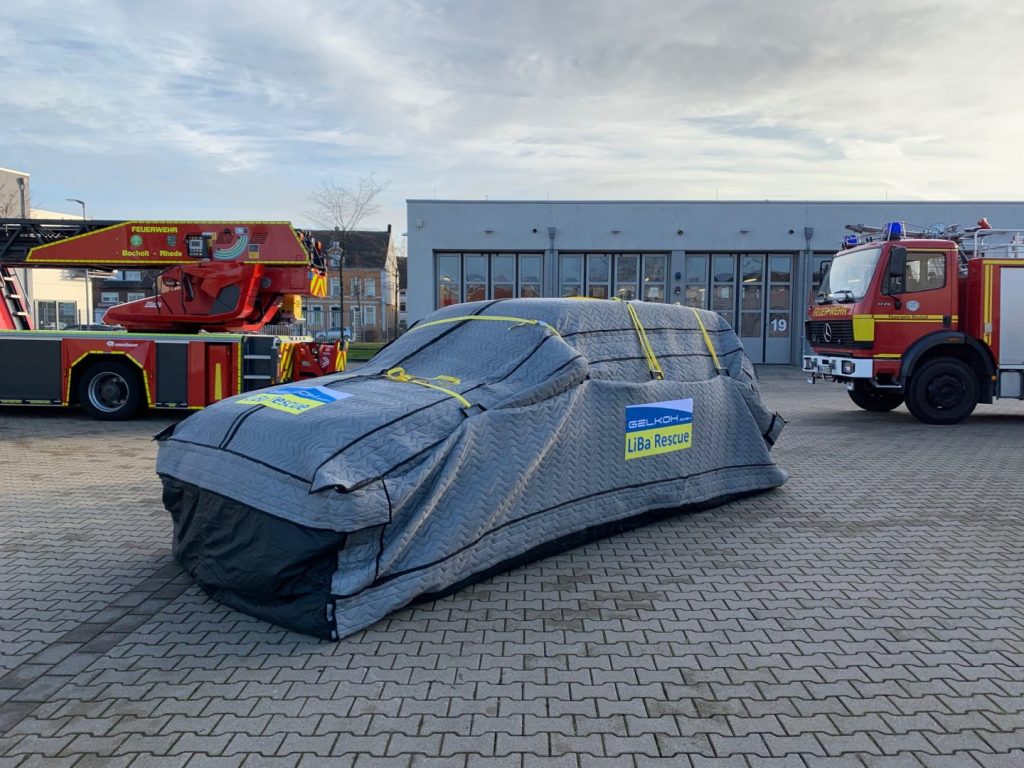You see them more and more often on Germany’s roads: Electric cars. Supported by the state, they are supposed to help bring about the energy turnaround. For fire departments, towing companies and car dealers, however, the new technology is not without problems. The problem is that, especially in the event of an accident, the lithium-ion batteries installed in the cars still pose a danger up to 48 hours later, because the battery can still ignite itself for that long if it is damaged in the accident. Since the extinguishing water usually does not reach the installed batteries, there have been only two solutions for rescue forces: either observe the vehicle for 48 hours, or sink it in a container with extinguishing water and thus cause a total loss.
GelKoh specializes in lithium battery safety and has now developed a third option with Ibena. The damaged car is wrapped in a so-called rescue bag and stored for the next 48 hours. It takes just three minutes for the vehicle to be packed into the Rescue Bag by two men. To do this, the car must first be pushed onto the lower part of the protective wrapping. Zippers and Velcro are then used to fasten the other parts. What looks at first glance like a mobile car garage is actually a modern high-tech solution, explains Markus Kohten of GelKoh. “The fabric is self-extinguishing,” says the developer. This means that if a fire starts in the vehicle, the heat generated by the fire releases gases in the fabric that extinguish the fire. There is also a protective layer that protects the vehicle’s paint, and an absorbent filter material that filters and absorbs pollutants such as toxic fumes or escaping hydrofluoric acid. And a ceramic layer on the bottom part of the Rescue Bag ensures that leaking fuel cannot escape into the environment in a hybrid vehicle.
Even a possible explosion of the battery was considered. “The fabric has extreme gas permeability.” That means the gases pass through the fabric in the event of an explosion, preventing it from rupturing. Moreover, this gas permeability additionally prevents heat from accumulating under the Rescue Bag, which could cause the battery to ignite, he said.
The experts at GelKoh and Ibena worked on the solution for two years until it was ready for the market. Again and again, details were improved, for example openings that make it possible for towing companies to load the vehicle.
The Rescue Bag is now available for cars and SUVs. Another one for vans is currently being developed.

